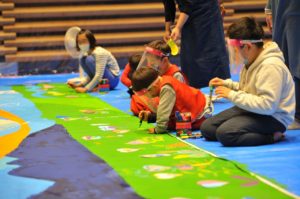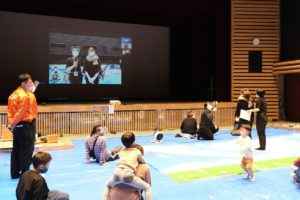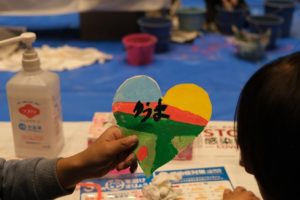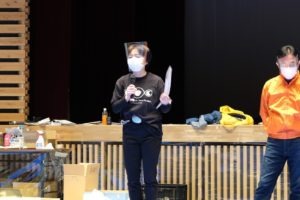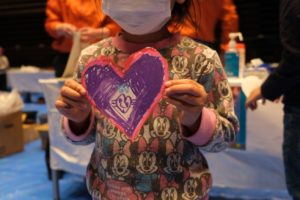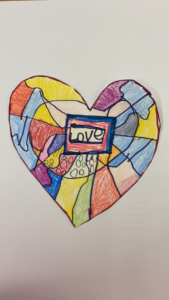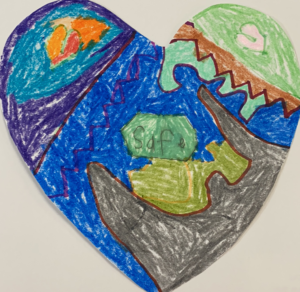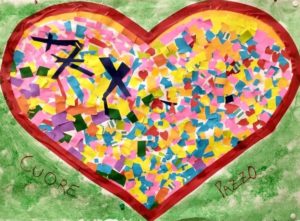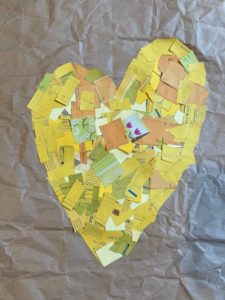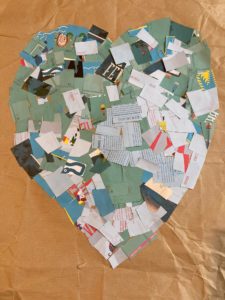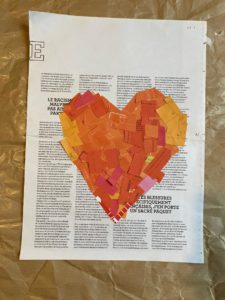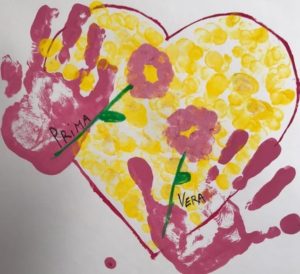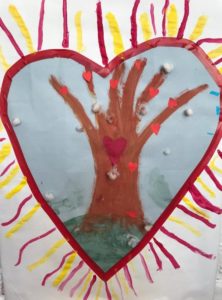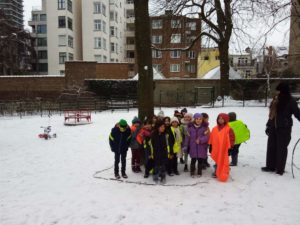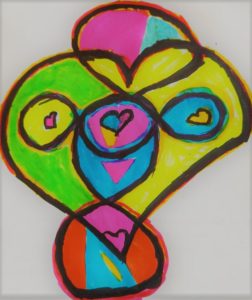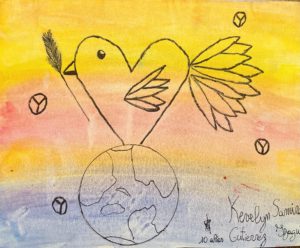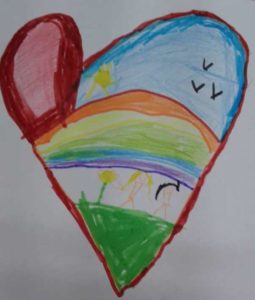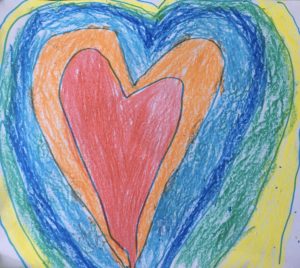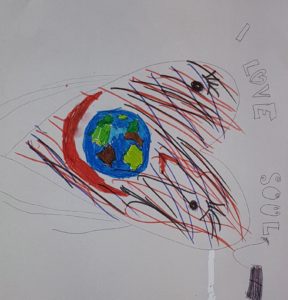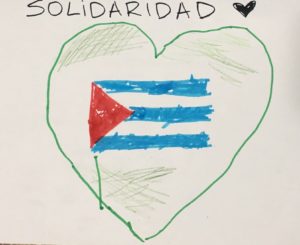Hearts for the Earth: the name of the project we are about to present says it all. On one side the hearts, on the other the Earth, linked in a metaphoric relationship which nods to the language of children. With the simplified image of a heart, many generations have communicated positive emotions and moods, whereas the Earth naturally recalls the global environment, with reference to sustainability and to the ecological transition. The words ‘Hearts’ and ‘Earth’ have a common core: ‘art’. Art is in fact the thread connecting the two contexts of the initiative conceived by Savina Tarsitano and Takuya Kaneda, the Rebirth/Third Paradise ambassadress and ambassador who founded and co-curated the project of collaborative canvas Kids’ Guernica and Third Paradise. Hearts for the Earth has developed from the artistic project Kids’ Guernica, which, throughout the years, has acted as a creative catalyst. “The experience was designed to give continuity to the collaboration with children from all over the world,” the ambassadress and ambassador explained, “trying to explore new hybrid ways of cooperating that rely on technology to work together from afar and to connect people. We need to feel close in this moment of total immobility”.

From this perspective, the initiative was able to bring children together in spite of geographical distance and the one caused by the current pandemic. Thanks to this artistic project, youths had the opportunity to join forces through their works, sending a message of peace and solidarity with their creativity. Hearts for the Earth in fact gathered contributions from Tokyo, Calabria, Brussels, Cuba, Florida and Mulabari (in Nepal) among others. The Rebirth/Third Paradise ambassadress and ambassador allowed the young participants to meet through art, to use their drawings to give voice to primary environmental and social issues especially relevant in time of pandemic. “One heart for solidarity, one for nature and one for the Earth,” the ambassadress and ambassador explained, “a symbol universally familiar to all children, the heart, easily and lovingly unites their messages from across the planet. In this period, being united has become a necessity and a duty, and the project, from this point of view, managed to bring together youths and community from all over the world with a simple heart, going across boundaries and travelling with the imagination”.
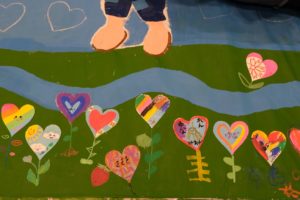
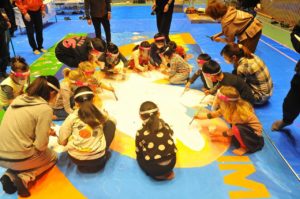
Basically, in a process similar to that of the Third Paradise canvas of Kids’ Guernica, the participating children created drawings which had to include a heart, represented and coloured according to their creativity. The final canvas of the project, gathering all the contributions, was produced in Nikko (in Imaichi) and curated by Savina and Takuya. The location is not accidental: every year, in March, this city hosts a participatory workshop with the local community to work on a new big Kids’ Guernica canvas.
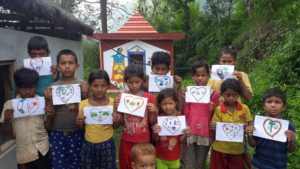
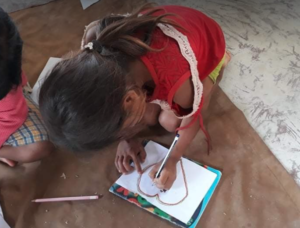
The participants from Nepal.
This year, the curators decided to continue the collaboration Hearts for the Earth, planning the workshop in a new virtual modality (click here to see the video of the workshop in Nikko). They organised two online webinars to introduce the contents and the objectives of the project*, which directly involved the children participating from Cuba, Nepal, Brussels and Florida, so as to create a shared experience. As mentioned, the activity engaged people and associations from all over the world: Cuba’s Rebirth/Third Paradise embassy, thanks to Laura Salas; the Tutti Frutti Children Language School in Brussels, thanks to its director Patricia Pitisci and the collaboration of its Italian, French and English classes; the Mulabari village in Nepal, thanks to the collaboration with professor Lila Bahadur Bishwakarma, with whom Savina and Takuya have been cooperating for about two years on the project Sustainability and Villages; the teacher Wafa from Tallahassee in Florida.
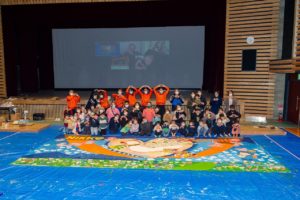
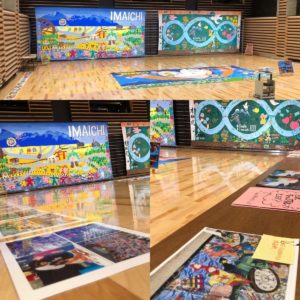
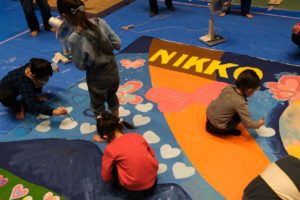
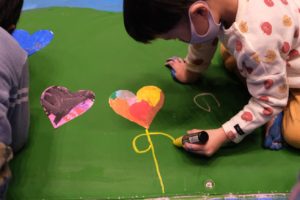
The finished canvas in Nikko.
All the works sent from the different countries in digital form were collected and printed in Nikko. The children from the Japanese city then proceeded to place them on a big canvas (see cover image). “We are both far and close,” the Cuban children wrote to their Japanese counterpart, “the future is in our hands”. The premises for a better future are already there: the finished canvas will be exhibited on the occasion of the Olympics in Japan, giving global visibility to the initiative and to the creative art of the young participants. I think we can safely say that if these children are the future, our planet is definitely in good hands.

